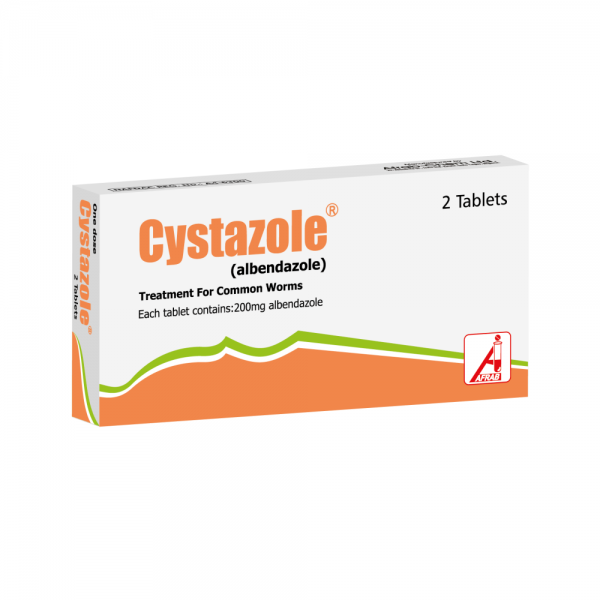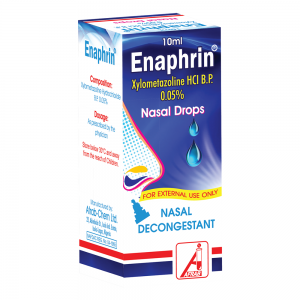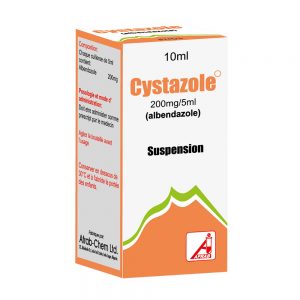- Have any questions?
- 0809 992 8864
- info@afrabchem.com
Products

Fungusol Powder
March 1, 2019
Cystazole Suspension
March 1, 2019Cystazole Tablet
Caplet (NRN: A4-6300): Albendazole 200 mg.
Pack size: Single dose of blister pack of 2 tablets.
Therapeutic Class
Anthelmintics
Dosage Form, Composition & NAFDAC Registration Number (NRN)
Caplet (NRN: A4-6300): Albendazole 200 mg.
Pack size: Single dose of blister pack of 2 tablets.
Pharmacology
Inhibitory effect on tubulin polymerization, resulting in loss of cytoplasmic micro tubules.
Indications
Albendazole is a broad spectrum anthelmintic active against most nematode and some other worms. It is used in the treatment of single and mixed intestinal nematode infections including:
Ascariasis, Enterobiasis (pinworm), Hookworm, Trichuriasis, Strongyloidiasis, Capillariasis, Cutaneous larva migrans, Toxocariasis ( dog and cat roundworm), Trichinosis, Cysticercosis (tapeworm infection), Echinococcosis (hydatid disease) and Opisthorchiasis.
Contra-indications
Albendazole is contraindicated in pregnancy. It is not recommended for Patients with cirrhosis. Albendazole is contraindicated in patients with known hypersensitivity to the benzimidazole class of compounds.
Precautions/Warnings
- Albendazole should be taken with food.
- If difficulty swallowing the tablets occurs, tablets may be crushed or chewed with a little water.
- Patients being treated for neurocysticercosis should receive appropriate steroid and anticonvulsant therapy as required. Oral or IV corticosteroids should be considered to prevent cerebral hypertensive episodes during the first week of treatment.
Interactions
Cimetidine
In patients with hydatid cyst, albendazole sulfoxide concentrations in bile and cystic fluid may be increased about 2-fold; however, plasma levels are unchanged 4 h after dosing.
Dexamethasone
Albendazole C trough at steady state was about 56% higher when coadministered with dexamethasone 8 mg. Monitor the patient for albendazole adverse reactions. If an interaction is suspected, adjust the albendazole dose as needed.
Grapefruit juice
Albendazole plasma concentrations may be elevated and the half-life may be shortened, increasing the risk of adverse reactions. Patients should avoid grapefruit products while taking albendazole.
Praziquantel
Albendazole sulfoxide C max may be elevated about 50%, increasing the risk of adverse reactions. Monitor the patient for albendazole adverse reactions. If an interaction is suspected, adjust the albendazole dose as needed.
Theophylline
Although theophylline pharmacokinetics are unchanged by albendazole, monitor theophylline plasma concentrations during and after albendazole treatment. Adjust the theophylline dose as needed.
Adverse Effects
A few cases of gastrointestinal disturbances (abdominal pains; diarrhea; nausea; vomiting), dizziness, and headache have been reported.
Dosage & Administration
Adult and children over 2 years: 400 mg (2 teaspoonfuls or 2 tablets) as single dose.
Strongyloidiasis or Taeniasis: 400 mg (2 teaspoonfuls or 2 tablets) as a single dose for 3 consecutive days; second course may be given after 3 weeks if necessary.
Child (under 2 years): 200 mg (1 teaspoonful or 1 tablet) as single dose for common helminth infections.
Hymenolepis nana infection: 400 mg (2 teaspoonfuls or 2 tablets) for 3 consecutive days.
Or as directed by the Physician.
Storage/Handling Recommendations
Store protected from light.
Keep in a cool dry place and away from children.





Reviews
There are no reviews yet.